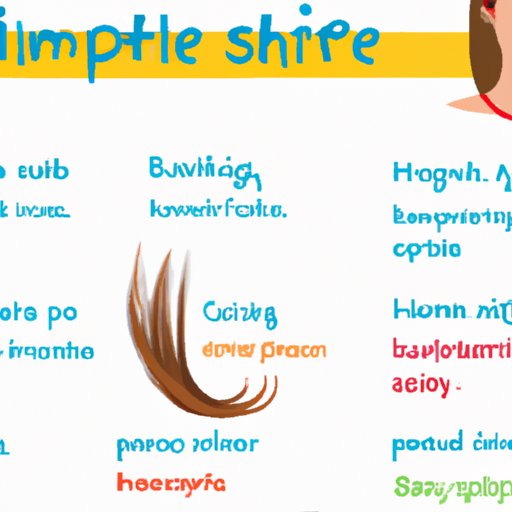Introduction
Writing effective descriptions of hair can be challenging, but it is an important skill to master if you want to write vivid, captivating stories that draw readers into the world you’ve created. Whether you’re describing a character’s hair or the setting of your story, it’s essential that you know how to accurately portray this important element. In this article, we’ll explore several tips and techniques to help you describe hair in writing with clarity and precision.
Using Sensory Language
When describing hair, it’s important to use words that evoke the senses. This will help readers get a clear image of what you’re trying to portray. For example, when describing curly hair, you could say “it was tightly coiled like a spring” or “it cascaded down her back in gentle waves.” You could also use words such as “silky” or “lustrous” to evoke a feeling of smoothness and shine. Additionally, you could incorporate sound and smell into your descriptions by saying things like “the wind made her hair rustle like a field of grass” or “her hair smelled of freshly cut lemons.”
Comparing Hair to Elements in Nature
Nature is full of wonderful elements that can be used to effectively describe hair. To find the best comparisons, think about the texture, color, and movement of the hair you’re trying to portray. For instance, if you’re describing dark, straight hair, you could say “it was as black as a raven’s wing” or “it hung like a curtain of midnight.” You could also use elements from the sea to describe wavy hair, such as “it crashed against her shoulders like a stormy ocean” or “it shone like the sun on a ripple of waves.”

Focusing on Texture and Color
Texture and color are two of the most important aspects of hair that need to be accurately portrayed in writing. When it comes to texture, there are many different types, such as curly, wavy, straight, coarse, fine, and more. Make sure to use specific words that clearly convey the texture you’re trying to describe. For example, you could say “her hair was a wild tangle of curls” or “it was as soft and silky as a feather.” When it comes to color, try to use words that accurately describe the hue. For instance, you could say “it was a deep mahogany brown” or “it was a bright, fiery red.”
Incorporating Metaphors and Similes
Metaphors and similes can be incredibly effective when describing hair. They provide readers with a vivid image of what you’re trying to portray. For instance, if you’re describing long, blonde hair, you could say “it was a river of golden silk” or “it cascaded down her back like a waterfall.” To make your metaphors and similes even more effective, you could use elements from nature, such as “it shone like the sun on a field of wheat” or “it was as wild and untamed as a thunderstorm.”
Utilizing Personification
Personifying hair can help make your descriptions even more vivid and captivating. To do this, you could give the hair its own personality or characteristics. For example, you could say “her hair was rebellious and unruly” or “it seemed to have a mind of its own.” You could also use words such as “playful” or “mischievous” to give the hair a unique personality. Additionally, you could use verbs such as “dancing” or “twirling” to give the impression that the hair is alive and has a life of its own.

Describing the Way It Moves
The way hair moves is an important aspect of hair that needs to be accurately described in writing. To do this, you could use words such as “swirling” or “undulating” to give the impression of movement. You could also use words such as “billowing” or “flowing” to evoke a sense of gracefulness. Additionally, you could use phrases such as “it swayed in the breeze” or “it blew in the wind” to give the impression that the hair is being moved by an outside force.
Conclusion
Describing hair in writing can be a challenge, but with the right techniques, you can create vivid, captivating descriptions that draw readers into your story. By using sensory language, nature comparisons, metaphors and similes, personification, and descriptions of movement, you can accurately portray any type of hair. With practice and patience, you’ll be able to craft beautiful descriptions that bring your stories to life.
(Note: Is this article not meeting your expectations? Do you have knowledge or insights to share? Unlock new opportunities and expand your reach by joining our authors team. Click Registration to join us and share your expertise with our readers.)
